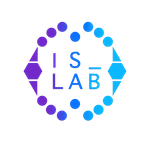C. Antoniou, N. Bassiliades, “Α tool for Requirements Engineering using Ontologies and Boilerplates”, Automated Software Engineering, Vol. 31, No. 5, 2024.
Author(s): C. Antoniou, N. Bassiliades
Appeared In: Automated Software Engineering, Vol. 31, No. 5, 2024.
Keywords: Boilerplates, Requirements specification, Ontology
Tags:
Abstract: The most popular technique for specification requirements is natural language. The disadvantage of natural language is ambiguity. Boilerplates are syntactic patterns which limit the ambiguity problem associated with using natural language to specify system/software requirements. Also, using boilerplates is considered a useful tool for inexperienced engineers to define requirements. Using linguistic boilerplates, constrains the natural language syntactically. Furthermore, a domain-specific ontology is used to constrain requirements semantically, as well. In requirements specification, using ontologies helps to restrict the vocabulary to entities, properties, and property relationships which are semantically related. The above results in avoiding or making fewer mistakes. This work makes use of the combination of boilerplate and ontology. Usually, the attributes of boilerplates are completed with the help of the ontology. The contribution of this paper is that the whole boilerplates is stored in the ontology and attributes and fixed elements are part of the ontology. This combination helps to correct semantically and syntactically requirement construction. This paper proposes a tool based on a domain-specific ontology and a set of predefined generic linguistic boilerplates for requirements engineering. We create a domain-specific ontology and a minimal set of boilerplates for an ATM (Automated Teller Machine). We carried out an experiment in order to obtain evidence for the effectiveness and efficiency of our method. The experiment took the form of a case study for the ATM domain and our proposed method was evaluated by users. The contribution and novelty of our methodology is that we created a tool for defining requirements that integrates boilerplate templates and an ontology. We exploit the boilerplate language syntax, mapping them to Resource Description Framework triples which have also a linguistic nature.
